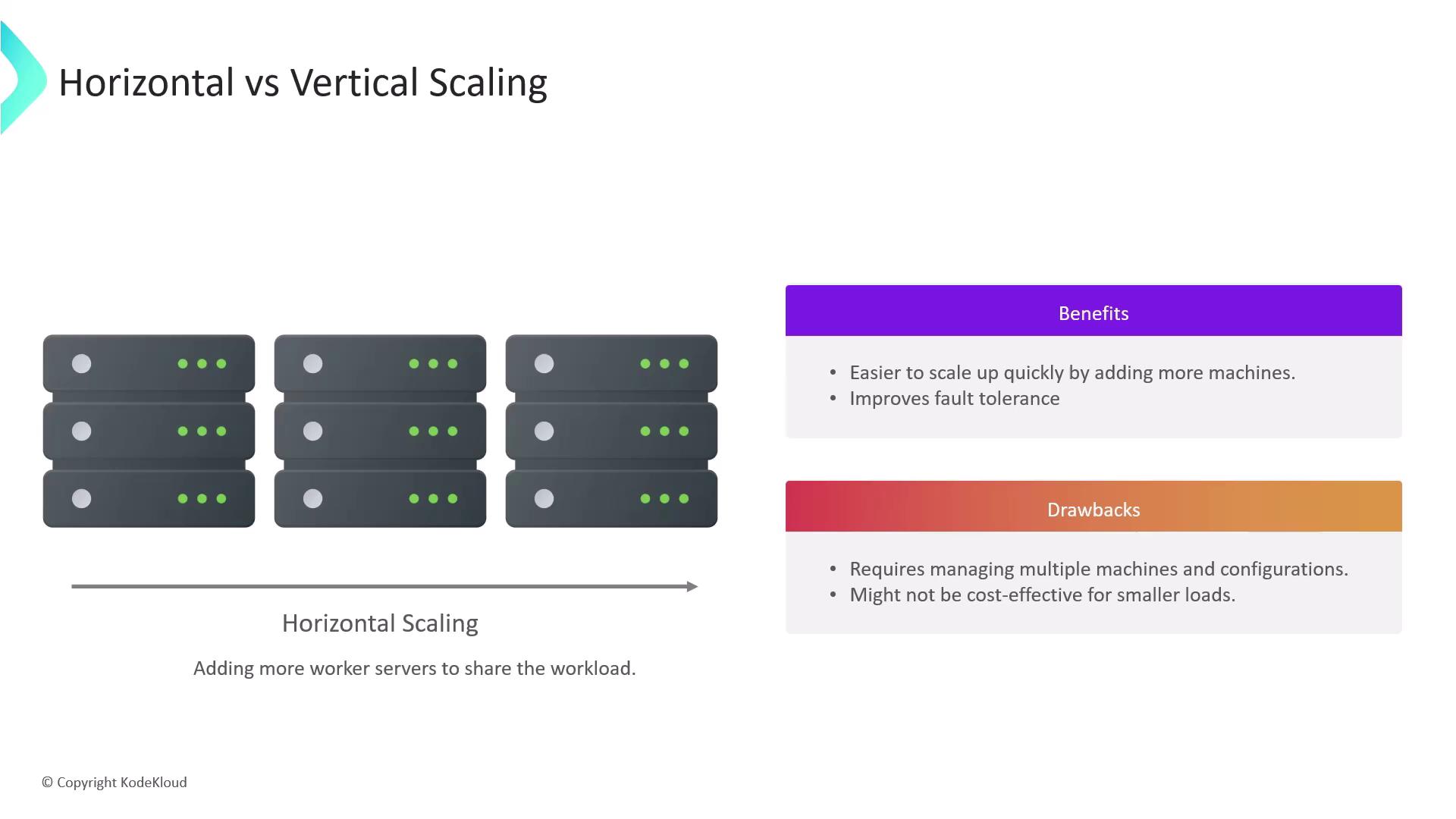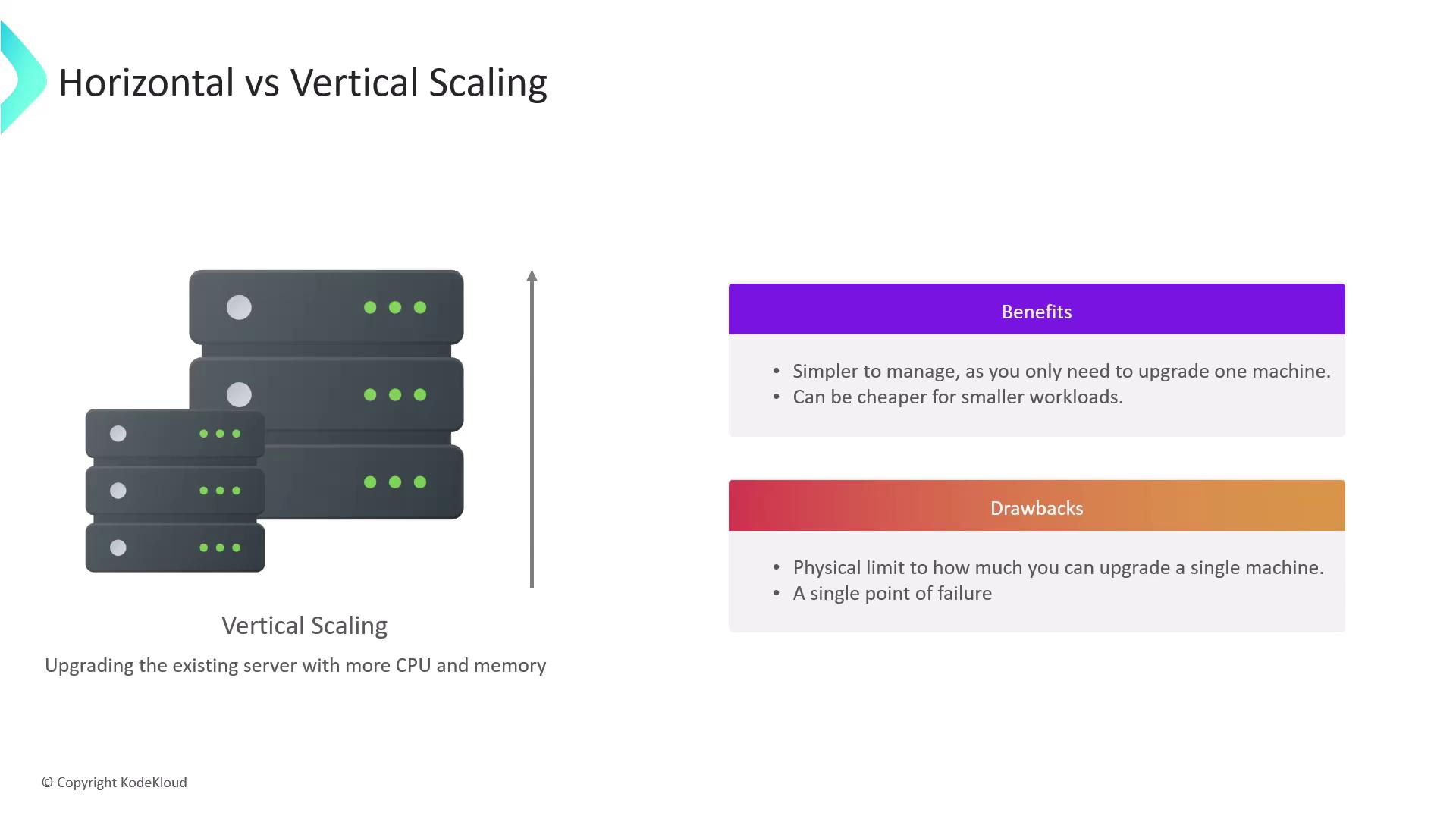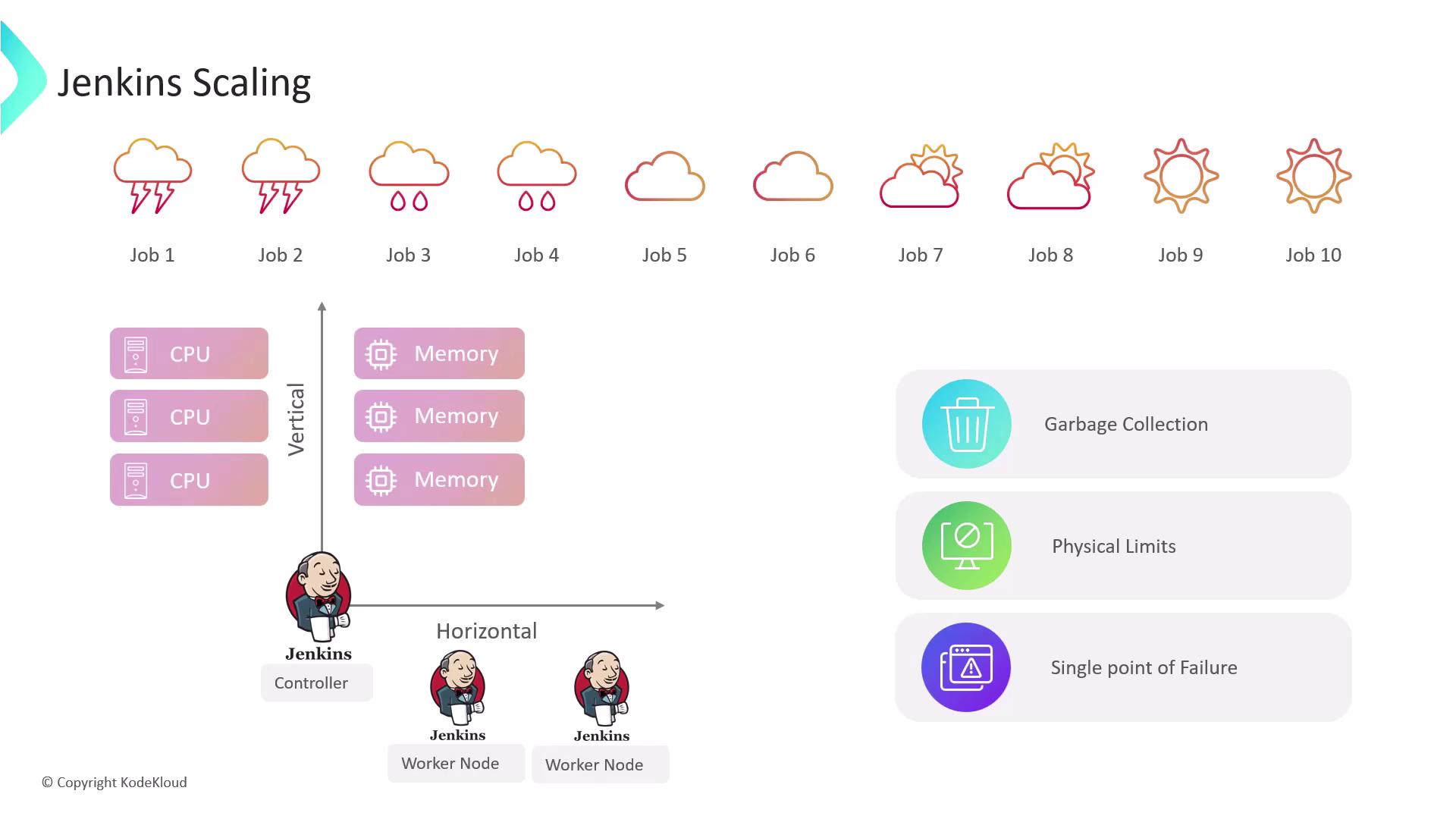Certified Jenkins Engineer
Jenkins Administration and Monitoring Part 1
Jenkins Scaling Capacity Planning
Effective capacity planning is crucial as your CI/CD workloads grow. In this guide, we explore the two primary scaling strategies—horizontal and vertical—and show how to apply them to a Jenkins environment. You’ll learn how to provision resources, distribute workloads, and ensure high availability for your Jenkins pipelines.
Horizontal vs. Vertical Scaling
When demand rises, you have two main options:
| Scaling Strategy | Description | Key Benefits | Key Drawbacks |
|---|---|---|---|
| Horizontal (Scale-Out) | Add more servers or nodes to share the load | • Fast capacity increase<br>• Better fault tolerance | • More infrastructure to manage<br>• Potential over-capacity for light workloads |
| Vertical (Scale-Up) | Upgrade CPU, memory, or storage on an existing server | • Easier single-node management<br>• Cost-effective for steady, small workloads | • Hardware limits<br>• Single point of failure |
Horizontal Scaling (Scale-Out)
- Quick provisioning: Spin up additional servers or containers.
- Resilience: If one node fails, others continue processing jobs.
- Elasticity: Automatically add or remove agents based on queue length.

Vertical Scaling (Scale-Up)
- Resource boost: Increase CPU cores, RAM, or disk on your master node.
- Simplified setup: Only one instance to monitor and secure.
- Cost savings: May be cheaper for predictable, low-traffic workloads.

Applying Scaling to Jenkins
As CI/CD adoption spreads, a single Jenkins controller can become a bottleneck. Build jobs, plugins, and user sessions all consume heap memory and CPU, leading to longer garbage-collection pauses and potential downtime.
Note
Refer to the Jenkins System Requirements before planning upgrades or adding agents.
Limits of Vertical Scaling in Jenkins
- Increasing heap size can worsen GC pause times.
- Physical hardware upgrades hit a ceiling and require maintenance windows.
- One controller means one failure can pause all pipelines.
Warning
Relying solely on vertical scaling creates a single point of failure—if the master node goes down, all CI/CD pipelines stop.
Embracing Horizontal Scaling with Build Agents
Distribute workloads by adding Jenkins agents (nodes):
- Offload builds: Keep the controller lean by running heavy jobs on agents.
- High availability: Agent failures don’t impact the master’s uptime.
- Rolling upgrades: Update or replace individual agents without halting your CI/CD pipeline.

Conclusion
For most growing Jenkins environments, horizontal scaling—deploying and managing multiple build agents—offers superior resilience and performance. Combine this with a scalable storage solution for artifacts and logs to complete your capacity-planning strategy.
Links and References
Watch Video
Watch video content